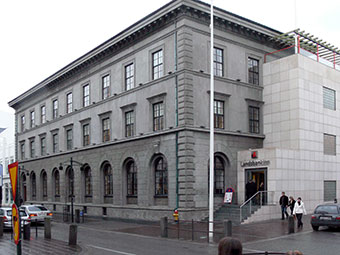1.2 The financial crisis – the cost of risk management failures
At the time of writing (in 2013), the global economy is in the aftermath of the financial crisis – principally a banking crisis – that emerged so spectacularly in 2007 and 2008. The features of the crisis demonstrated truly chronic failings in financial risk management. We will explore these failings throughout this free course.
The summary features of the crisis are well known.
During the 1990s and the first decade of the 2000s, many banks used funds borrowed from the wholesale markets – basically money borrowed from other banks and other financial companies – to expand their investment activities. While economic conditions were benign, with inflation and interest rates low and with the major economies experiencing steady economic growth and low unemployment, the risks inherent in this business model – which involved many banks expanding the size of their balance sheets at a fast pace – were not really exposed.
Things changed from around 2005/2006 as higher interest rates in the US triggered a sharp increase in defaults among customers – many of them with low incomes – who had borrowed funds to finance home purchases. This was the so-called ‘sub-prime’ debt crisis, where the term ‘sub-prime’ relates to the poor credit standing of those who had borrowed money.
So the start of the financial crisis was a significant example of credit risk – the risk that the money you invest is not repaid.
Very quickly, though, a credit risk problem turned into a liquidity risk crisis. As knowledge of the credit losses spread, those lending money in the wholesale markets became increasingly reluctant to provide funds to those they believed to be exposed to the sub-prime credit losses. Additionally, they began to exercise more general caution about the credit quality of the organisations they lent to.
The consequences of this shift in sentiment by lenders were inevitable. The cost of borrowing wholesale funds started to rise sharply and the depth of funds available shrank.
Those banks most reliant on wholesale funds to support their business were immediately exposed by what had become a liquidity crisis. One of the first casualties of this environment was Northern Rock Bank in the UK. This bank only avoided insolvency by being rescued by the Bank of England in 2007.
The combined credit and liquidity crisis continued to place many banks under severe pressure until, in September 2008, the collapse of the US investment bank Lehman Brothers triggered a virtual collapse of the global banking system. Autumn 2008 saw the governments and central banks of many of the world’s major economies taking emergency action to rescue their banking systems. This typically involved providing funding to deal with the liquidity crisis and injecting capital into the banks to accommodate the credit losses that the banks were incurring in their lending.
This ‘bail-out’ (financial rescue) of the banks – although essential to stabilise the financial system – understandably still evokes anger from the public.
The financial crisis not only provides vivid examples of credit and liquidity risks, but also the interrelationships between different types of financial risk. Indeed, the financial crisis also triggered certain non-financial risks, particularly reputational risk for those organisations found to be most vulnerable. The months following the peak of the crisis saw the management of these organisations publicly ridiculed.
One further significant development was that it became evident that many of the risk management systems being employed by organisations were not programmed to accommodate the scale of the problems that arose. Models that had previously been viewed as robust and trustworthy became revealed as unfit for risk management during such a major financial crisis. We will examine such failings later.
While the focus of attention during the early days of the financial crisis was on the near systemic failure in the global banking system, there were many other risk management calamities at a regional and national level.
In the UK, many local authorities (municipalities) had built up cash balances, largely from the sale of certain assets – principally, their stocks of rental properties for the public (council houses). This resulted in the authorities having funds to invest in the financial markets. In the middle of the first decade of the new millenium, many started to place funds with the Icelandic banks that had built up a presence in London and who were raising funds to finance their global investment activities. The scale of growth of these banks meant that they collectively had a balance sheet size in excess of the entire Gross Domestic Product (GDP) of Iceland itself!

The 2008 global banking crisis saw three of these banks – Glitnir, Lansbanki and Kaupthing Bank – collapse and rapidly end up in receivership. This left UK local authorities with, collectively, £953 million of credit exposure to these failed banks. Local authority treasury departments had relied on the credit ratings for these banks, supplied by the leading rating agencies – Standard & Poor’s (S&P), Moody’s and Fitch. These agencies had all rated them as creditworthy, at least until close to the point of their collapse. The local authorities consequently witnessed credit losses that attracted huge headlines and a parliamentary investigation. The investigation that followed led to criticisms of the reliance of the local authorities on ratings agencies, without looking to other sources to form effective credit risk judgements on the Icelandic banks. The so-called ‘credit crunch’ and the global banking crisis that began in 2007 brought attention to the notion of ‘liquidity risk’ – in effect, where organisations run out of money.
The Icelandic banks episode points clearly to the fact that the business of risk management and the risk of failures in risk management are not just the preserve of banks or private sector companies. Organisations outside the private sector are also exposed to financial risks and need to manage them effectively.
We have focused in this section on certain of the risk management failings revealed by the financial crisis. Our case studies will, though, not be confined to this recent period of financial history. Certainly risk management failings were not born in 2007!
